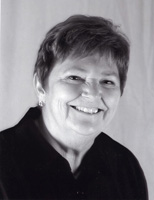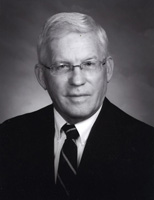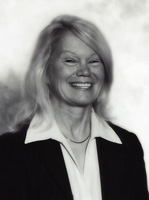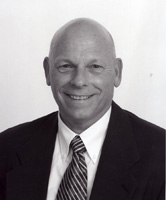 |
|||
 |
 |
 |
 |
Nancy Butson Utica Eisenhower |
Ken Gutow Grosse Pte. North |
Barb Myler Royal Oak Shrine |
Larry Walters Grand Haven |
(click on Inductee's name to read 'description')
 |
|||
 |
 |
 |
 |
Nancy Butson Utica Eisenhower |
Ken Gutow Grosse Pte. North |
Barb Myler Royal Oak Shrine |
Larry Walters Grand Haven |
(click on Inductee's name to read 'description')

 “I fought hard, I really did,” says Nancy Butson of her quest to get Utica Community Schools to support girls tennis in the early ‘70s. “It was pulling teeth to get girls sports in the beginning.”
“I fought hard, I really did,” says Nancy Butson of her quest to get Utica Community Schools to support girls tennis in the early ‘70s. “It was pulling teeth to get girls sports in the beginning.”
Nancy also uses the words lobbying, begging, and threatening to describe her efforts. After all, schools surrounding her were offering the sport but Nancy, a secondary health and physical education teacher, could only offer tennis through the G.A.A. program and in the summer on a “give me a call” basis.
But her persistence eventually paid off. In 1976, Nancy fielded her first girls team even though it competed for only a portion of the season because they started late. However, the very next season in their first full year, the team finished second in the regional and went to the state tournament in Holland. “It was a fiasco but we had a ball,” she says. That’s because it snowed on the first day and her 1S competed despite being in the Homecoming Court that weekend.
But tennis coaches know that it only takes one visit to the state finals to charge up a program (We loved it; we want to go back). As it turns out, Nancy’s kids went back six more times and in 1997 took a 1S to the Big Dance in that her teammates had come up short in the regional by only one point. In turn the boys qualified for final tournament action four times.
It would have been more often if Eisenhower had not had to compete with the Grosse Pointes and Port Huron Northern and later, the Rochesters. “The girls team was able to finish ahead of Grosse Pointe North a few years but we never were able to go ahead of Port Huron Northern and Grosse Pointe South,” she says.
Throughout most of this time, Nancy ran both the varsity and junior varsity teams until she was finally allowed an assistant coach in 1993. When she took over the boys program two years after starting the girls team, she had to resign as girls softball coach (she also coached basketball) and in the process, took a substantial pay cut. As with most schools in those days, tennis was treated as second class. “The current boys coach who took over from me (Chris Layson) was one of my players. I remember when he came on the team the first year from football, he had a hard time accepting the fact that tennis did not get free meals on the road, free T shirts, and other perks,” she says.
“It always took lots of effort to get anything done for tennis,” she continues. “Eventually I was able to get bleachers, a storage building, windscreens, courts resurfaced (and painted blue with gray outside – our school colors) so that I left a beautiful and complete tennis facility. We had car washes, candy sales, etc. and our athletic boosters started to support us as well.”
Nancy herself learned tennis through the G.A.A. program as there were no girls sports offered at the time she was in high school and college. A gifted athlete when growing up in Rochester, she played softball, basketball, volleyball, and archery but there were no interscholastic competitive sports in the ‘50s. She was lucky that a sponsor (note that the title was not coach) knew and loved tennis. Therefore, Nancy played in the summers, joined a tennis club in the mid-70s, and started to play year-around. She would take tennis lessons from a professional and then pass what she learned on to her players. She also attended MHSTeCA clinics and began working as an official at USTA junior tournaments. She was on the SEMTA board of directors for three years and was the secretary of the Management Committee.
Nancy![]() , who taught health and physical education at Eisenhower, retired from teaching in 1996 after 31 years in the Utica Community Schools system. She continued as the Eagles varsity coach for two more years before retiring from coaching. Previous to what turned out to be her Hall of Fame tennis coaching career, she coached softball, basketball, and volleyball.
, who taught health and physical education at Eisenhower, retired from teaching in 1996 after 31 years in the Utica Community Schools system. She continued as the Eagles varsity coach for two more years before retiring from coaching. Previous to what turned out to be her Hall of Fame tennis coaching career, she coached softball, basketball, and volleyball.
After retirement Nancy worked at Rochester Hills Tennis and Swim Club/Lifetime Fitness. She ran the pro shop, was tournament director, taught CPR and First Aid classes to all employees, and helped the pros on court. In February 1999, she attended a National USTA training workshop to become certified to teach officiating classes and was, for a time, chairperson of the officials committee of SEMTA.
A year ago she quit working at Lifetime Fitness, sold her house in Sterling Heights and moved north to Elk Rapids (near Traverse City) where she now plays at the Grand Traverse Resort near Traverse City. Two knee surgeries have slowed her down which means that she has to resort to (gasp!) playing golf.
I really loved the relationships with both the boys and girls teams,” Nancy says. “I really enjoyed the kids. I really enjoyed working with them. I think they had fun, but they worked hard.”
“She knew each one of us as a person,” Layson said. “She treated each one of us with differently due to our individual needs and talents. That is the mark of a coach that cares.”
| Back to Top |
 When the MHSTeCA Board of Directors met for the first time in the summer of 1977 at Bill Oliver’s Lodge in Prudenville, Ken Gutow was there. He became the first editor of the newsletter in the days of stencils and dittoes. He also helped Bob Wood with the early clinics by, among other things, driving speakers to and from the airport -- and for years he carried membership card No. 1.
When the MHSTeCA Board of Directors met for the first time in the summer of 1977 at Bill Oliver’s Lodge in Prudenville, Ken Gutow was there. He became the first editor of the newsletter in the days of stencils and dittoes. He also helped Bob Wood with the early clinics by, among other things, driving speakers to and from the airport -- and for years he carried membership card No. 1.
He was almost the first coach of Grosse Pointe North as well. In 1971 (the school opened in 1968), the athletic director at the time was Ed Wernet who had been Gutow’s football coach when Ken played for then-Grosse Pointe High School (he was all state honorable mention). Ken, a math and computer teacher in the district since 1963, had transferred to the new school from Parcells Junior High where “I coached everything.”
In fact Ken was such a good athlete in his student days that he set the Grosse Pointe junior high record of 9’3”. That is until as a track coach at Parcells Junior High he taught Jim Sheldon -- who knew nothing about the mechanics of the event -- how to do it. Jim caught on fast. When he was in ninth grade at a triangular meet, he missed 8’ twice, then brought Ken over to help him with his last jump. He made it and continued on to break Ken’s record with a vault of 9’6”. Sheldon went on to become state champion in his senior year of high school. In other words, Ken knew how to coach.
However, in spite of what you might preconceive about the facilities of a wealthy district, the first North courts were “glorified parking lot;” i.e. the surface inside the fences was the same as the outside. “The lines weren’t straight and the nets weren’t the correct height,” Ken says. “As a matter of fact, there were two sets of lines and we had to remind our opponents which lines to call. We made stakes (singles sticks) for the nets and lobbied hard and long for the courts to be repaved.”
Those first teams had no JV program. Ken ran the program with as many as 40-50 kids by establishing three teams (Varsity, B, and C). Nobody got cut and all kids got a chance to play in meets, primarily because Ken scheduled schools (John Shade at Grosse Ile and Fred Karr at Ann Arbor Pioneer, for instance) with similar programs.
But make no mistake about it, the best ones could play. Although it took several years to catch up with the established South, Ken’s teams won the Bi-County Championship seven out of nine years and captured the Mac Red title four out of seven years. From 1971 to 1979 and again from 1988 to 1994, his kids won 167 dual meets as against only 44 losses. The Norsemen captured three regional titles and finished second 12 times. They qualified for state competition every year but one and 5 times they finished 14th place or higher. His best team, a 1977 contingent, was undefeated in dual meet play and ended up 6th in the state.
But Ken might be better known for the time he was the center of a controversy that placed him in Judge Damon Keith’s court. In the early ‘70s when girls tennis was just getting established, North’s student population contained two girls – Debbie and Kathy Mascarin -- who were better than most of the boys. During a year when a millage had failed and Ken was coaching the team on an intramural basis, his contest against University Liggett made the Detroit newspapers because Kathy posted North’s lone victory against the perennial state Class C-D state champions. This one match -- plus a girl who was running on the boys track team at Ypsilanti High School -- prompted a class action suit about girls being able to participate on boys teams if their schools didn’t have a equal-opportunity female program. “That day went well for all girls in Michigan because Judge Keith said the girls would be allowed to compete,” said Ken. “I thought his reasoning was great. He said he had four daughters of his own in high school.”
As it turns out, most schools established girls varsity teams because they didn’t want the boys and girls competing together. Eventually Title IX came along and ordered schools to have programs comparable to the one offered to the boys. “Whenever I watch our girls at North play soccer, softball, or basketball, I have a little smile on my face about the history of their programs and that Debbie and Cathy played a part in it,” says Ken.
Ken’s hardheadedness manifested itself a decade later when he quit coaching tennis in part to protest the board of education’s refusal to provide transportation for tennis players to away meets. “The kids were supposed to drive themselves or have me use my own car with must my own personal liability insurance. I couldn’t afford that I didn’t want kids riding with other kids that were driving. So I said no. Eventually the transportation issue changed and I came back in 1988.”
Between the Title IX issue and the transportation conflict, Ken was probably not the favorite coach of the Grosse Pointe Board of Education. But his first year back, his Norsemen beat Grosse Pointe South and won their first MAC Red Division Championship. Ken retired from teaching in 1993 but came back and coached his second best team in 1994 when they beat South three times by identical scores of 6-1. Two singles players and one doubles team made all state. He also ran the North Invitational.
Ken has much going for him: roots in the establishment of our organization and coach of many successful teams. “When I founded the MHSTeCA in 1977, Ken played a major role in getting us started,” says Bob Wood. “He helped me in all areas. I do not think we would have made it without his help during our early years.”
But Ken is also known as a fighter, one who stood up when others stayed seated. It is time for him to stand up again, this time to receive his Hall of Fame plaque.| Back to Top |
 In her 22 years as the varsity boys and girls coach at Royal Oak Shrine, Barb Myler’s teams have never won a regional tournament. The boys have qualified for state competition just once and only one girl, Ann Marie Rodgers, qualified at 1S 15 years ago. At regional time, her team was stopped from advancing year in and year out by such powers as Grosse Pointe University Liggett, Detroit Country Day, Ann Arbor Greenhills, and Grosse Ile. Yet, Barb was inducted into the Catholic Coaches Association Hall of Fame in June 2003. She enters her second Hall of Fame in February 2008.
In her 22 years as the varsity boys and girls coach at Royal Oak Shrine, Barb Myler’s teams have never won a regional tournament. The boys have qualified for state competition just once and only one girl, Ann Marie Rodgers, qualified at 1S 15 years ago. At regional time, her team was stopped from advancing year in and year out by such powers as Grosse Pointe University Liggett, Detroit Country Day, Ann Arbor Greenhills, and Grosse Ile. Yet, Barb was inducted into the Catholic Coaches Association Hall of Fame in June 2003. She enters her second Hall of Fame in February 2008.
That’s because over the years Barb has been the quintessential grass roots coach who has gotten her hands dirty for over two decades in a suburban Detroit area that has neither much literal grass nor a sterling tennis tradition. She started the Shrine boys and girls programs in 1985 in order to give her own kids an opportunity to compete at the high school level. But she continued to coach long after they graduated and has become a classic example of an individual whose school would very likely not have such a sustained program if it were not for her enthusiasm and hard work.
In the winters she has become a head-turning fixture at the MHSTeCA clinics. In the summers she hosts the Royal Oak Invitational tournaments and the Royal Oak Daily Tribune tournament. She also conducted a week-long summer camp for a number of year at The Fairlane Club in Dearborn. “My daughter attended her high school drill session years ago, coming away with a more confident game,” says MHSTeCA board member J.R. Muniz of Riverview Gabriel Richard. Barb’s colleagues in those summer sessions were Jerry Escheck of Aiport, Al Kaye of Allen Park Cabrini, and Jan and Kim Gottlin of Riverview. The program included drills during the week with a tournament at week’s end. Players competed at their own level.”
Despite the hard work Barb hasn’t taken home many trophies on behalf of her school, although her players have won three Catholic League Titles. Instead, as a manager of the conference championships for over 20 years, she has organized both divisions and then handed out awards to such perennial powers as Detroit Catholic Central and Brother Rice in boys, and Birmingham Marian and Livonia Ladywood in girls. “She is the epitome of a service provider,” says Hall of Famer Tiger Teusink.
Coaches know that successfully managing tournaments requires the respect of coaches and players alike. But to ramp up the respect a bit more, consider that Barb has represented the tennis-rich Detroit area at the state seeding committee 21 times – 16 years for girls and five years for boys. This means that year after year she has met with some of the most successful coaches in the Detroit area immediately after the regional tournament to host gatherings in which lists of prospective seeds are compiled. She would then teach school the next day, drive to East Lansing after school, and meet with others from around the state well into the evening hours and all the next day to seed and make the draws. “She is a rock of calmness during the often intense atmosphere of the seeding process,” says Tiger. “She demonstrates a position of extremely fair and unbiased approach to this sensitive responsibility.”
How respected is she? Barb has been regional coach of the year four times and state coach of the year (1999). She has served on the MHSAA Representative Council for 10 years. Her induction into the Catholic League Hall of Fame makes her only the third tennis coach to receive the honor (Jim Kerwin of Livonia Ladywood and Hall of Famer Julie McKnight of Marian being the others).
How competitive is she? Some boys gain the edge having grown up the youngest of a bunch of brothers or having played at the neighborhood courts with older kids who instilled lessons harshly. In Barb’s case, she grew up in Grand Rapids with four brothers. She played every sport, including tennis. She attended Mt. Mercy Academy and graduated valedictorian, earning a four-year all-tuition scholarship to the University of Southern California.
Barb started working at Shrine High School in 1983 as a secretary but soon figured out that she liked teaching. She started the tennis team even though she was going back to college to get a teaching degree in English while also working full time. Remarkably busy but very efficient, she completed a Master’s degree in Library and Information Science one August several years ago and then went immediately to the courts to serve and serve and serve some more.
This includes a helping hand to coaches. “When I began coaching at Riverview Gabriel Richard, Barb was among the first to welcome me into the coaching ranks,” say J.R. “She helped me get through the maze of newness that comes with taking on a high school program. She is well respected by her colleagues, but more importantly she is loved by her players.”
“Barb does it all: friend, mom, grandma, media specialist, and coach,” adds Riverview’s Jan Gottlin. She has a bundle of endearing qualities, including a kind and caring heart and a warm, ever-ready smile. She has a unique way of making everyone around her – students, parents, or fellow coaches – feel welcome.
Our turn: Welcome to the Hall of Fame.| Back to Top |
 At one point during a hotly-contested match between two perennial state powers in the late ‘70s or early ‘80s, East Grand Rapids’ Charlie Partin turned to Ann Arbor Huron’s Gordon Boettcher and said: “What we need here is a little more fellowship.” It should be noted that Partin and Boettcher, both laid-back coaches but hard competitors, won multiple state championships and had Hall of Fame careers (1986 and 1996, respectively).
At one point during a hotly-contested match between two perennial state powers in the late ‘70s or early ‘80s, East Grand Rapids’ Charlie Partin turned to Ann Arbor Huron’s Gordon Boettcher and said: “What we need here is a little more fellowship.” It should be noted that Partin and Boettcher, both laid-back coaches but hard competitors, won multiple state championships and had Hall of Fame careers (1986 and 1996, respectively).
What Partin didn’t know at the time was that he could have been referring to some other coaches in West Michigan who practiced what he was preaching. At about the same time period, several future Hall of Famers were making it a tradition to gather before each season. “When the girls varsity program started, Grand Haven was a member of the Lake Michigan Athletic Conference (LMAC),” says Larry Walters. “After a few years, our school became a member of the Ottawa/Kent Red Conference. The coaches in this league were Tiger Teusink of Holland, Karen Page of West Ottawa, and Tom Leyrer of Jenison. They hold some of my fondest memories of my coaching experience.”
“The OK Red coaches would get together prior to the start of the fall season to take care of the small details that would make the season run smoothly,” Larry continues. “This would also include a boat ride on Lake Michigan or a round of golf. After the season we would all meet for a dinner and go over the past season. Sometimes we played a little tennis at the Holland Tennis Club just to get together. I believe we developed a bond that most coaches do not experience in their sport. Being a member of this fellowship was unique and very special.”
“The golf games were intense,” recalls Tiger. “So were the matches between our schools. But the aura of sportsmanship pervaded throughout. Regardless of the outcome, we walked away with a good feeling. And Larry’s teams were good!”
Larry generated respect for Grand Haven tennis by demonstrating respect for other teams,” continues Tiger. He went out of his way to create an environment of athletic competition that was fun for all.”
“We had so much fun at meetings, matches, and tournaments but things were extremely competitive when we met,” adds Karen. “Larry did an amazing job in handling teams which encompassed all types of players. He had teams made up of regional and nationally ranked players meshed with street players. He found a way to keep everything and everyone in the proper perspective and have team cohesiveness. Opposing parents and players would actually hug after matches.”
“Larry was energetic,” says Tiger. “As a coach he was so dependable. He always assisted in helping prepare the courts for play if wet weather delayed a match or a tournament. He pitched in to organize play whenever it was needed. He was a ‘roll up your sleeves and help’ kind of guy.”
“My mother started me playing tennis when I was in junior high in Otsego,” says Larry. She told me that it would be a game I could play for the rest of my life and she was right.”
As with many players, Larry learned some of the fundamentals by spending countless hours hitting against a wall, i.e. the Hoxie Method. He loved it. In high school, he was 1S and captain of the Otsego High School tennis team, in part because he took lessons on the clay courts of Kalamazoo College between his junior and senior years. He played intramural tennis at Hope College while earning a degree that majored in chemistry and biology.
Because of his background, Larry was approached by several girls in 1973 to develop a program at Grand Haven High School. At that time, girls tennis was taking off throughout the state and especially in West Michigan. “Our first season, 1974, was tough going,” recalls Larry. “Spring Lake, coached by Charlie Bassett (Hall of Fame Class of 1992) had an excellent team. I remember on our first visit to Zeeland the girls didn’t want to get off the bus because the Zeeland Chix looked too good in the warm-ups and team uniforms. Our team mother made our uniforms.”
This situation was rectified the next year. So was the installment of a junior high team that spring. Larry coached both teams and began running the tennis program for the Grand Haven Recreation Department during the summer of 1975. He gave lessons, developed adult city tennis leagues, and coach the intercity tennis teams.
“He taught the novice and nationally ranked players,” says Kathy Nederveld, whose two daughters went through his program who worked as Larry’s assistant coach for 10 years (She was the MHSTeCA Assistant Coach of the Year in 1992). “He melded players of various backgrounds and temperaments into a cohesive unit each year that maximaized the potential of the team. He stressed school pride, a strong work ethic, competitive drive, and fair play.”
“His expectations on the court were no less than in the classroom,” continues Kathy. As his life was a melding of academics and athletics, he taught by example the importance of both pursuits and how they compliment and enhance each other.” Indeed, as a science teacher, one of Larry’s fondest memories was watching his girls study on the way home after their away matches. He saw lights from flashlights in the back of the van.
“I enjoyed the excitement of the victories and the lessons learned from the defeats,” says Larry. Over 18 years, there were 152 wins as against 62 losses. “He had aspirations for state-wide notoriety for the team and this vision brought pride and purpose to the players,” says Kathy. “Larry loved sport and found an outlet for his passion in women’s tennis.”
| Back to Top |